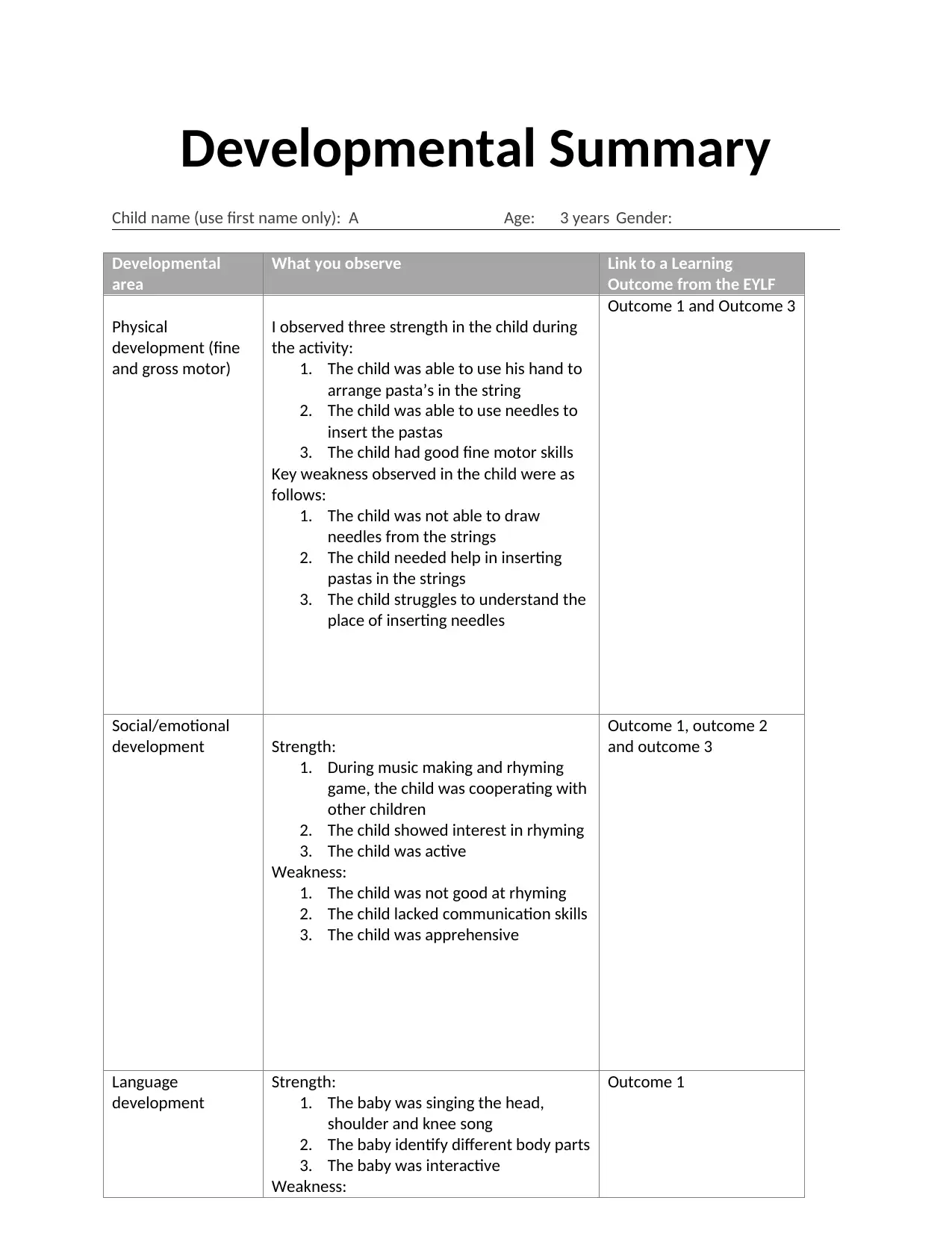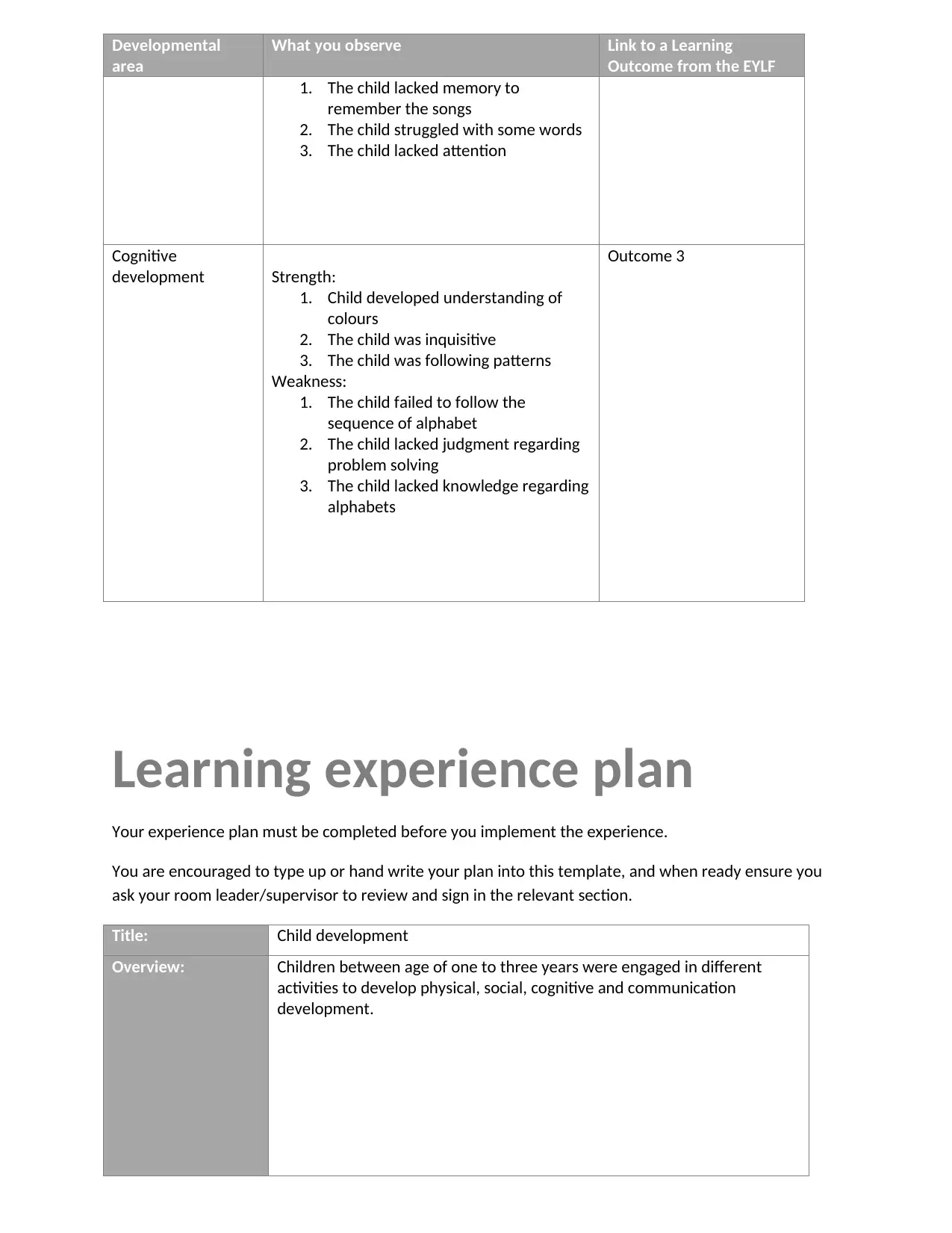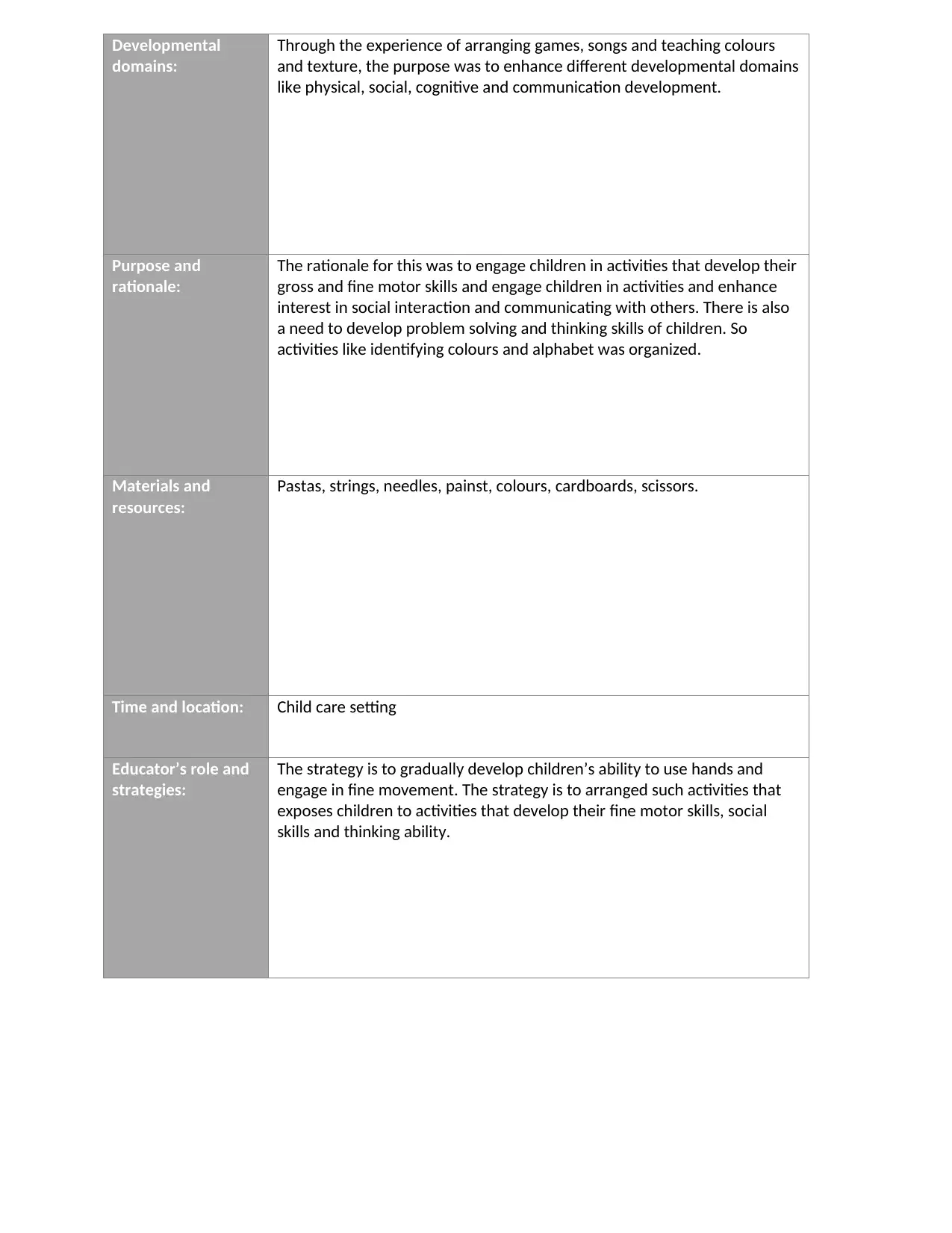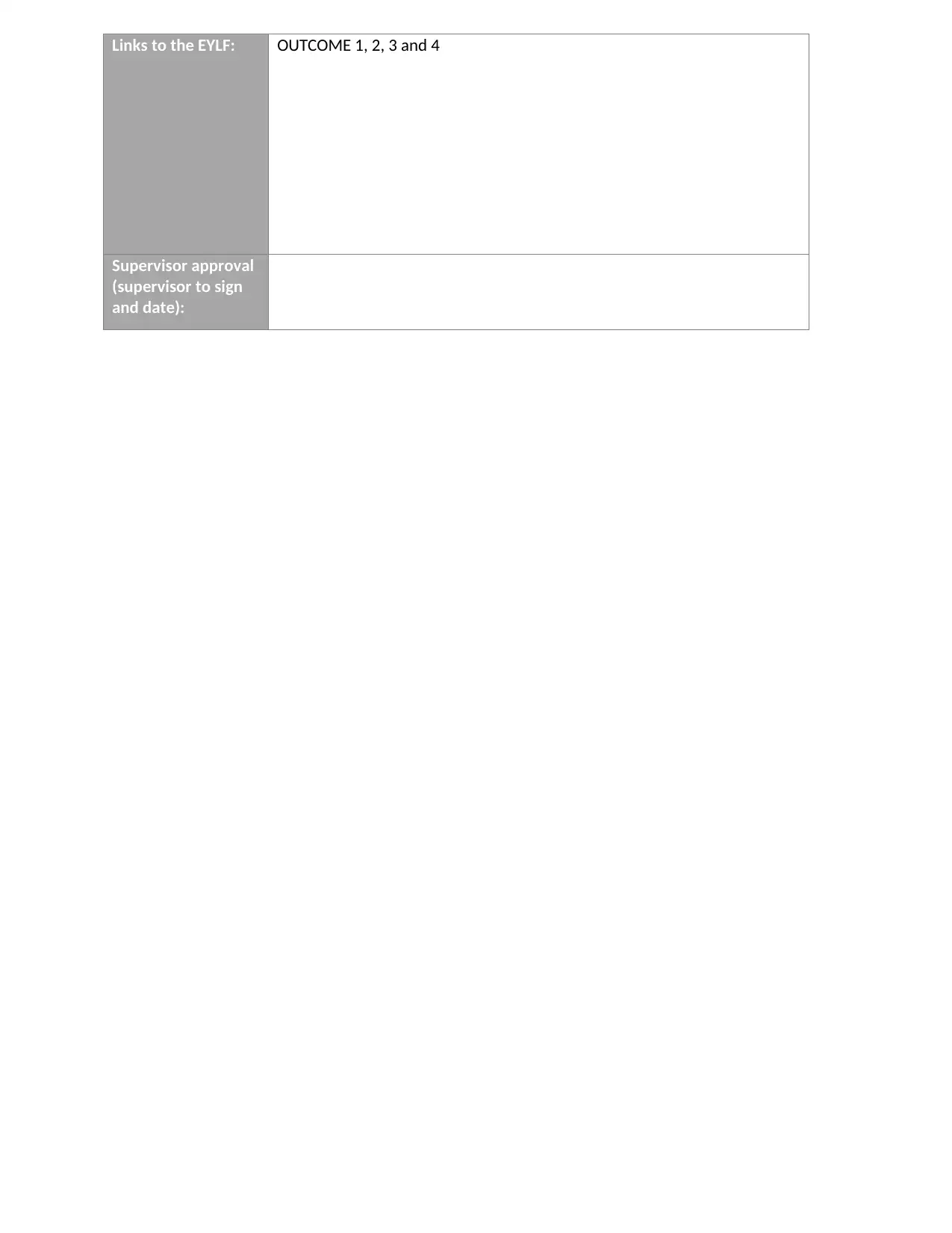Workplace Assessment: Child Development and Creative Experiences
VerifiedAdded on 2022/11/24
|4
|550
|471
Practical Assignment
AI Summary
This assignment presents a comprehensive analysis of child development through observation and practical application. It includes a developmental summary of a 3-year-old child, detailing strengths and weaknesses across physical, social/emotional, language, and cognitive domains. The assignment also features a learning experience plan designed to enhance these developmental areas, with a focus on activities that promote fine and gross motor skills, social interaction, and cognitive abilities. Furthermore, the assessment requires the planning and implementation of four creative experiences and the observation and documentation of three children's development within a childcare setting. These experiences are tailored to support and extend the children's development, aligning with EYLF outcomes. The assignment addresses factors influencing child development and provides scenarios to analyze practical challenges in early childhood education. This detailed approach allows students to apply theoretical knowledge to real-world scenarios, fostering a deeper understanding of child development and effective teaching strategies.
1 out of 4











![[object Object]](/_next/static/media/star-bottom.7253800d.svg)